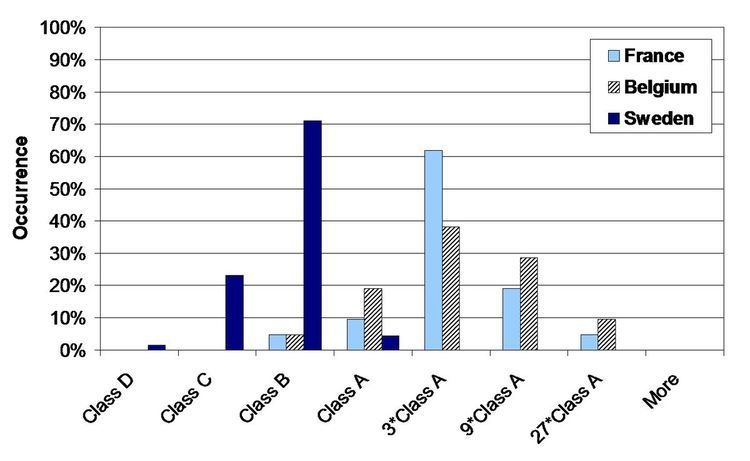 | ||
Ductwork airtightness can be defined as the resistance to inward or outward air leakage through the ductwork envelope (or ductwork shell). This air leakage is driven by differential pressures across the ductwork envelope due to the combined effects of stack and fan operation (in case of a mechanical ventilation system).
Contents
- Metrics
- Power law model of airflow through leaks
- Pressurization test
- Duct sealing or duct tightening
- References
For a given HVAC system, the term ductwork refers to the set of ducts and fittings (tees, reducers, bends, etc.) that are used to supply the air to or extract the air from the conditioned spaces. It does not include components such as air handlers, heat recovery units, air terminal devices, coils. Attenuators, dampers, access panels, etc. are a part of the ductwork but have more functions than conveying the air and are therefore also referred to as technical ductwork products.
Ductwork airtightness is the fundamental ductwork property that impacts the uncontrolled leakage of air through duct leaks.
Typical reasons for poor ductwork airtightness include:
An airtight ductwork has several positive impacts:
Sweden is often considered as a reference for airtight ducts: the requirements introduced in AMA (General material and workmanship specifications) starting in 1950 have led to excellent ductwork airtightness on a regular basis in Sweden.
In the US, there has been a significant amount of work showing energy saving potentials on the order of 20-30% in homes; and 10-40% in commercial buildings with airtight ducts
The ASIEPI project technical report on building and ductwork airtightness estimated the heating energy impact of duct leakage in a ventilation system on the order of 0-5 kWh per m2 of floor area per year plus additional fan energy use for a moderately cold European region (2500 degree-days).
Duct leakage affects more severely the energy efficiency of systems that include air heating or cooling.
Metrics
There are two major systems to classify ductwork airtightness, one based on European standards, the other based on ASHRAE standard 90.1-2010. Both are based on the leakage airflow rate at a given duct pressure divided by the product of the duct surface area and the same duct pressure raised to the power 0.65.
Power law model of airflow through leaks
The relationship between pressure and leakage air flow rate is defined by the power law model between the airflow rate and the pressure difference across the ductwork envelope as follows:
qL=CL∆pn
where:
This law enables to assess the airflow rate at any pressure difference regardless the initial measurement. Threshold limits in ductwork airtightness classifications usually assume an airflow exponent of 0,65.
Pressurization test
Ductwork airtightness levels can be measured by temporarily connecting a device (sometimes called a duct leakage tester to pressurize the ductwork including duct-mounted components. Air flow through the pressurizing device creates an internal, uniform, static pressure within the ductwork. The aim of this type of measurement is to relate the pressure differential across the ductwork to the air flow rate required to produce it. Generally, the higher the air flow rate required to produce a given pressure difference, the less airtight the ductwork. This pressurization technique is described in standard test methods such as EN 12237 and EN 1507, ASHRAE standard 90.1-2010. It is similar in principle to that used to characterize building airtightness.
Duct sealing or duct tightening
At construction stage, the airtightness of individual components depends on the design (rectangular or round ducts, pressed or segmented bends, etc.) and assembly (seam type and welding quality). Components with factory-fitted sealing devices (e.g., gaskets, clips) meant to ease and accelerate the installation process are widely used in Scandinavian countries. A variety of techniques are widely used to tighten duct systems on site, including gaskets, tapes, sealing compound (mastic), internal duct lining, aerosol duct sealing. So-called "duct tapes" are often not suited for sealing ducts, which explains why, in the US, the International Energy Conservation Code (IECC) requires any tape used on duct board or flexible ducts to be labeled in accordance with UL 181A or 181B.
